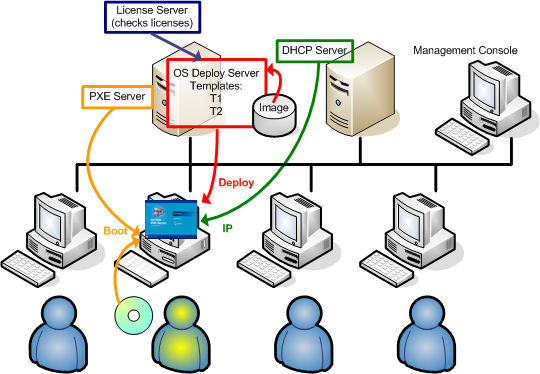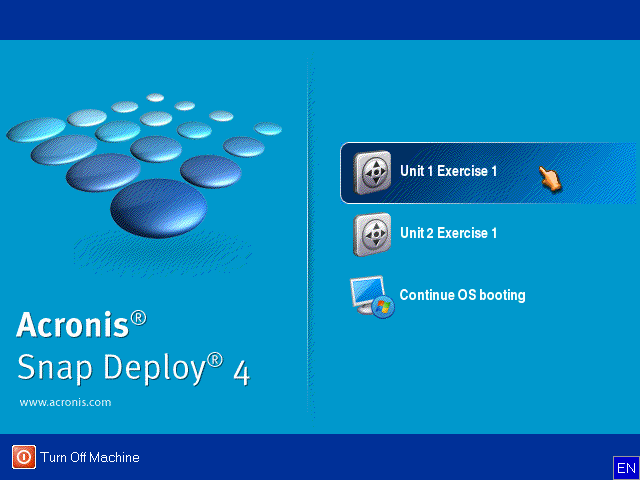
An administrator creates a set of deployment templates that meet the organization’s needs and assigns to each template a name that can be easily understood by a user.
The administrator creates an Acronis bootable media with these templates or uploads these templates to a PXE server. The administrator then switches on the user-initiated deployment mode.
Users who need to redeploy their machines boot the machines from the bootable media or the PXE server, and select the template by name from the boot menu. The deployment starts immediately and proceeds independently on each machine.

User-initiated deployment mode: a user starts deployment.
In software testing labs, the choices can be various operating systems, various editions of the same operating system, or the same operating system with various settings or applications. In a university or school lab, the choices can be various exercises that students have to explore, or the initial system image for the purpose of self-restore.

The custom boot menu. A user can start deployment with any of the two templates or boot into Windows.
Tip: To find a template in the custom boot menu, press a letter key which corresponds to the first letter of the template name. The cursor will jump on the first template whose name starts with the pressed letter.
Important: If the user-initiated deployment uses a PXE server, machines that are deployed through deployment tasks will not be able to boot from that PXE server. However, deployments to such machines will be possible if they boot from a bootable media.
The user-initiated deployment mode is primarily intended for continual work without the administrator’s assistance. Only users (the ones on the target side) will be able to initiate deployment. However, the administrator can view logs, create new deployment templates, change the user-initiated deployment configuration (add, edit or remove boot menu items) and perform other management operations except initiating the custom deployment.